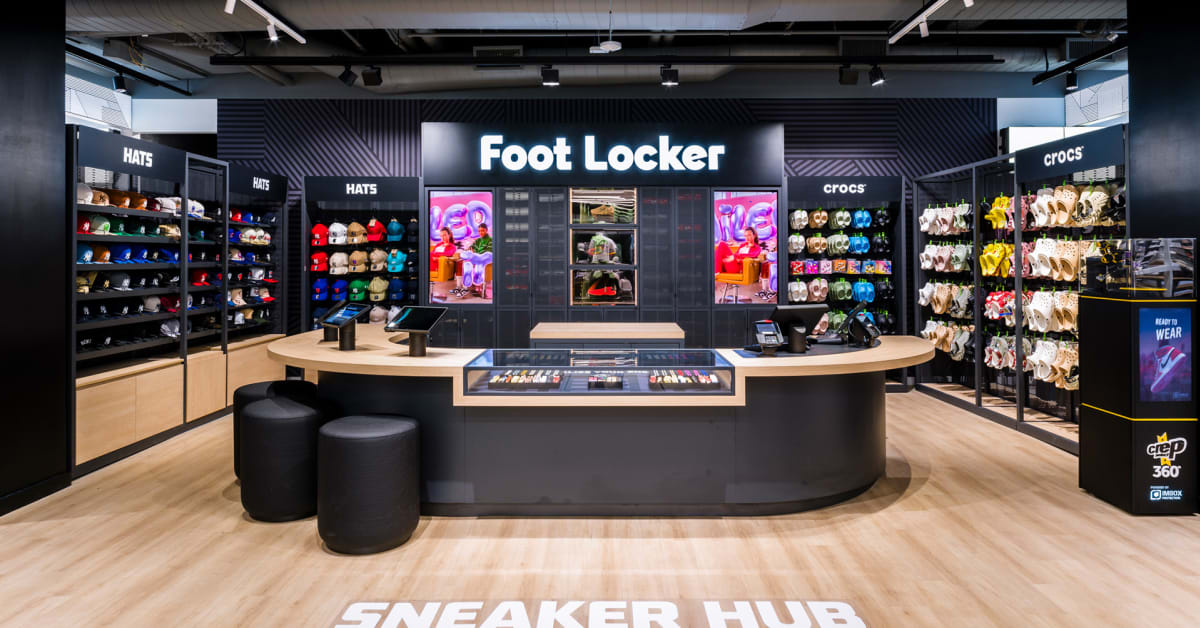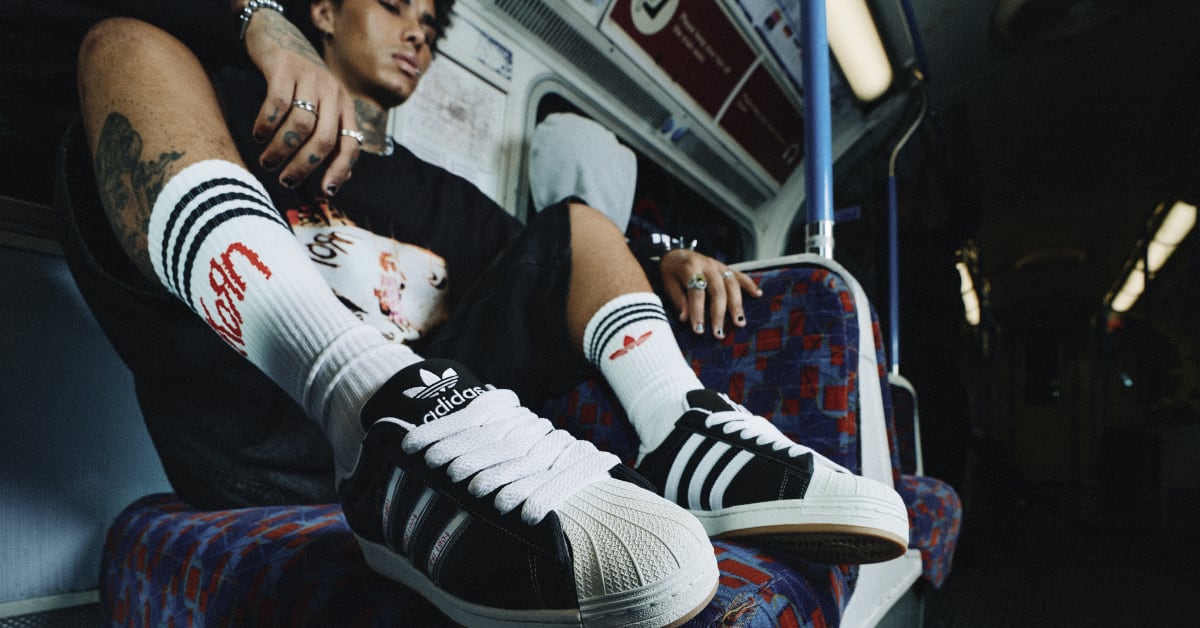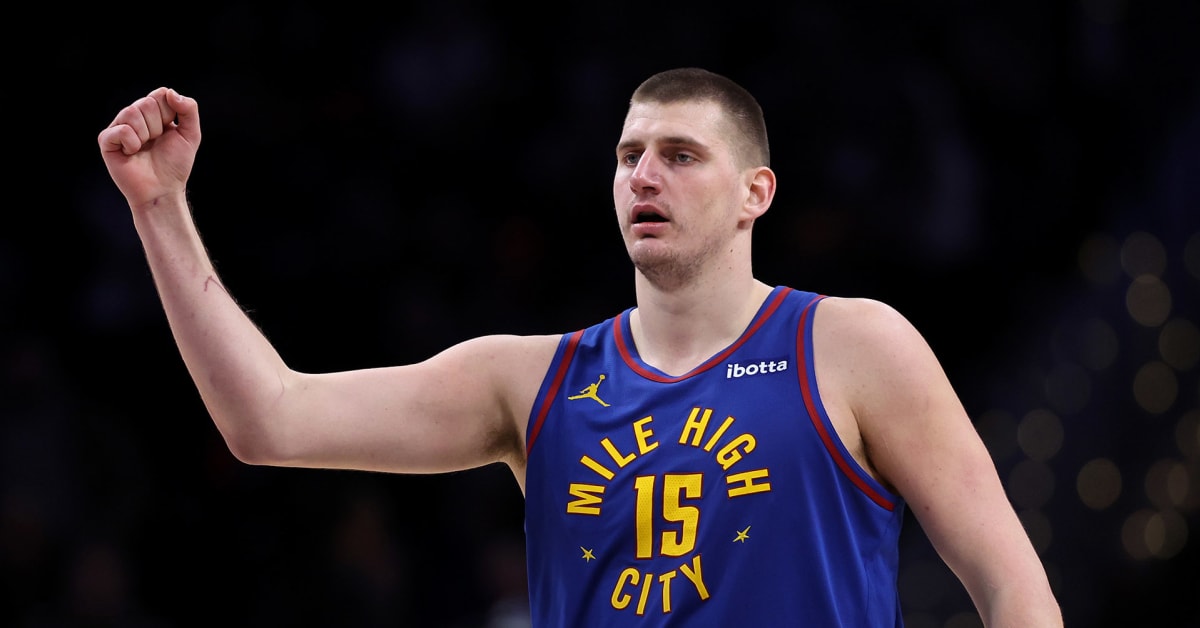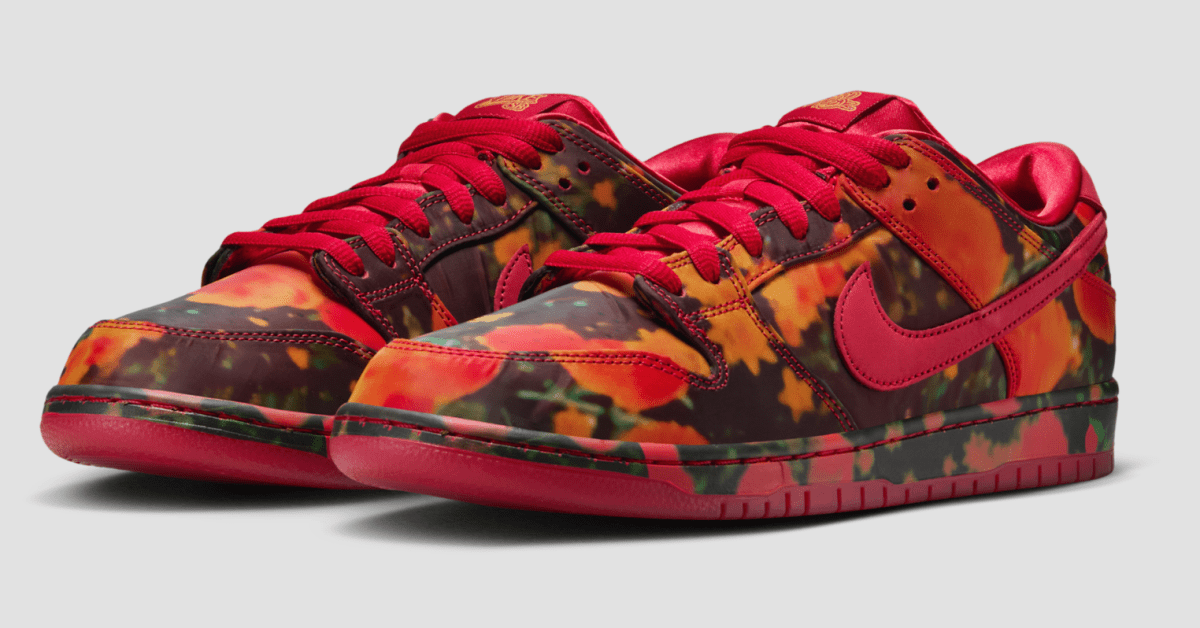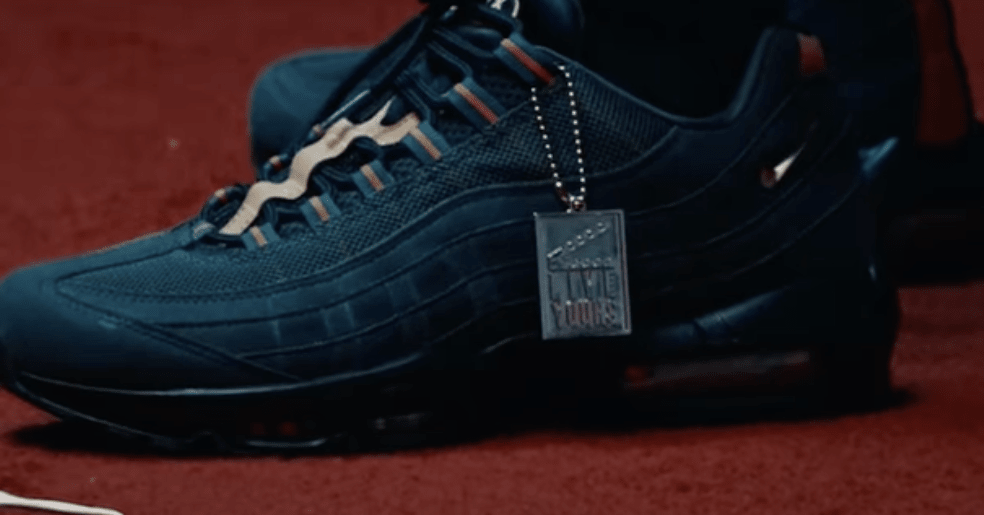If physical retail is dead, Foot Locker certainly didn’t get the memo. The chain sneaker store, which celebrated its 50th anniversary this year, sent a strong signal that brick-and-mortar stores still matter with the August reopening of its 34th Street location in New York City. The store, long a hub for high-heat drops and frenzied lineups, has interactive stations every few steps—you can test your vertical, get a 3D scan of your feet, or get a custom lace job for your shoes.
The slick redesign at 34th Street is a needed positive for Foot Locker, which grew fast in the first half of the 2010s before stumbles and sales declines in the last seven years dragged the company down.
For Foot Locker EVP and CCO Frank Bracken, building out experiential retail spaces is critically important.
“We’ve proven through Covid and the last several years,” Bracken says, “that the demise of the mall, the demise of physical retail, was greatly exaggerated.”
Foot Locker EVP and Chief Commercial Officer Frank Bracken. Via ShopTalk
Bracken says that Foot Locker’s sales per square foot in store, and physical retail’s overall contribution to the company’s bottom line, have mostly returned to where they were at pre-Covid levels in 2019. It feels that way in New York City, where crowds outside sneaker stores are emerging again. Bracken doesn’t usually participate in those launches in person, but he does monitor them.
“I’m always a little late,” Bracken says of his attendance on big release days. “I’m never on day one because I’m probably checking the sales on a screen.”
The grand reopening on 34th Street is not the only way Foot Locker is celebrating its 50th. The retailer worked with four footwear brands, bringing together rival sneaker makers Adidas, New Balance, Nike, and Puma, for an anniversary collection of exclusive shoes dressed in similar white, black, and gold colorways. Foot Locker had to be up front with each of the participating brands about their product being included in a collection alongside their competition.
“Not to toot our own horn, but that’s the power of Foot Locker,” Bracken says.
Complex spoke with Bracken last month to get his take on which sneaker brands have the most momentum, Nike’s retail strategy, and how much longer the Adidas Samba will be salient on every street corner across the globe. (Note that the interview took place before Nike announced its CEO changeover, so there was no opportunity for conversation about that transition.)
The Adidas Samba Era
Adidas Sambas on display at Foot Locker. Via Foot Locker
The Adidas Samba has been a monster of a model in the 2020s, standing out alongside powerhouse Nike silhouettes like the Dunk and Air Jordan 1 as one of those sneakers that’s inescapable. And it’s not done yet.
“Oh no, we’re not off Samba,” Bracken says. “We’re not off Samba, but what we want to do is to keep it fresh and then keep the next idea coming in.”
While Foot Locker isn’t ready to step away from the Samba, the company knows that it has to be careful not to rely on the sneaker too much.
“I think we’ve gotten better at that honestly, after maybe not being good in the previous decade and riding franchisees and ideas too long,” Bracken says. “But now, through the use of data science, we look at sell-throughs and key geographies and with key consumer cohorts, and we start to see some of the productivity and the velocities slow down.”
Foot Locker shares that data in real time with brand partners and can conduct monthly reviews to determine a shoe’s status—whether it’s cooling down, and in need of a refresh, or showing early signals of heating up, and ready for bigger allocations. How does it know when to walk away from a shoe?
“You look at the exit margin of the franchise,” Bracken says. “Are you actually selling at full price? Are you having to discount the majority of the units sold? We look at Google search terms, which is another data source. We also look at traffic and search on our domestic sites, like on Foot Locker and the search bar. How many people are typing that in [search engine optimization] and the trends around SEO.”
Should demand for the Samba atrophy, Foot Locker will look to more slim, low cut shoes that will receive a big push in coming seasons from brands like Adidas.
“Next idea up, low profile, that’s kind of what we’re seeing at Holiday and into ’25,” Bracken says. “We see it coming. The question is, will it be as big as core classics were in the last three years? We’d like it to be. And we’re certainly investing in inventory and content and space in our stores, and our sites, in the next six-to-nine months to help accelerate that trend and get it to scale.”
Foot Locker’s Relationship With Nike
Foot Locker expects to have more Nike product in the future. Via Foot Locker
When Nike increased its focus on direct-to-consumer sales in the last decade, retailers like Foot Locker suffered. Now Nike, which is in the midst of a historic slump, has started to warm back up to its retail partners.
“They had a direct-to-consumer focus over the last couple of years, and now I think they’ve kind of admitted and realized that having healthy wholesale retail partners is really important,” Bracken says. “You can have a good DTC business and healthy retail partners. It’s not an or. It’s and.”
Bracken believes that sneaker companies have a renewed appreciation for wholesale channels because of their value in not only driving sales but also providing data, insights, and storytelling that DTC might be blind to. Because of the consolidation of big box footwear retailers, he reasons, the stores that are still standing have more power at sneaker brands.
Nike never cut Foot Locker off completely, but the strategy did impact the retailer, which saw its Nike allocations decrease in recent years. Now, Foot Locker execs say they are back on the offense with Nike.
“They are still our largest partner, and they’re a critical partner,” Bracken says. “They always have been, and they always will be. We have our ups and downs, but we’ve renewed our relationship and we’re committed to growing with them, and them with us.”
He says one high-priority item for both Foot Locker and Nike is the development of their respective kids’ businesses.
“We talk a lot about the kids’ business together, because we’re always thinking about five and 10 years down the road,” Bracken says. “Who are our next consumers in sneaker culture? So that’s the reason KFL and the kids’ businesses is so strategically important beyond the dollars and cents that we deliver, we’re recruiting a new generation of consumers for the future.”
Nike Making Less Dunks, Air Jordan 1s, and Air Force 1s
Nike plans to make less of its most popular shoes, like the Dunks. Via Nike
Nike has indicated on investor calls this year that it’s scaling back production of its most popular sneakers—the Dunk, Air Jordan 1, and Air Force 1—in order to protect the long-term health of the franchises.
“We could sell more of these products if we wanted to, but we don’t think that’s the right thing to do from a brand point of view,” Nike CFO Matt Friend said in March. “And we know that we manage these franchises for long-term health.”
Then-CEO John Donahoe gave an update on the plan in June, saying that Nike accelerated its reductions for those models. Nike’s said it wants the franchises to remain impactful for retail partners, and Bracken thinks it will be a positive for Foot Locker.
“They are taking some actions in terms of the number of pairs in the marketplace and distribution,” Bracken says. “For us as Foot Locker, because those are basketball silhouettes and they layer back to our strategy of basketball culture and leadership, we feel we’re well protected and it’s actually going to be a net benefit for us.”
He anticipates that while Nike’s own channels and other retailers may receive fewer of those powerhouse shoes, Foot Locker will end up with a higher share of the overall amount of Dunks, Jordan 1s, and Air Force 1s in the market.
“They’re going to control distribution and total players in the marketplace,” Bracken says. “We think our percentage of that reduced total will actually increase, and that hopefully the sell-through, the productivity, and the margins will be even better. You’ve got a better supply-demand equation working.”
New Balance’s Momentum
The New Balance 1906R. Via Stadium Goods
Yes, Nike is Foot Locker’s biggest partner, and Foot Locker is anticipating more Nike business after seeing the brand pull some of its product from wholesale while it focused instead on direct-to-consumer sales in the last decade. But the sneaker walls at the retailer’s doors look more diverse right now than they have in years. Which brands are filling up the shelf space vacated by Nike at Foot Locker?
Bracken has seen sneakers from Hoka, New Balance, and On scale up over the last three years to become a significant part of the retailer’s business. (Hoka, he says, is particularly popular among teenage girls, while the On shopper generally comes from higher-income, more suburban areas.)
New Balance is no doubt the most popular of those brands for sneakerhead consumers, and has reached a new level of cool in the 2020s with its mixture of widely available lifestyle shoes and limited edition collaborations. Bracken gives New Balance credit for the way it’s combined retro offerings with more contemporary styles
“I think it’s going to go down as one of the great case studies of how they took a lot of the equity, a lot of the excellence in manufacturing and brand equity,” Bracken says of New Balance, “and then really brought it to the masses and mainstream of sneaker culture.”
Regional Sneaker Differences
The Nike Air Max Plus, or Tn, was designed exclusively for Foot Locker. Via Nike
Believe it or not, despite the internet sneaker monoculture exemplified by uber popular models like the Dunk and Air Jordan 1, people in different countries still consume and canonize footwear in different ways. Bracken, who’s traveled to Foot Lockers across the world, sees this firsthand in his work.
“You go to Manchester or Birmingham, England, and the sneaker game there is a little bit different,” Bracken says.
What trends has he picked up on in his travels? There are the Ons, Air Max 95s, and Under Armour apparel beloved in industrial British cities like Liverpool. There are pockets in the north side of Paris of tight-knight North African communities who are obsessed with vis-tech shoes like the Asics Gel Quantum and the Nike Air Max Tn, Bracken says.
“The sell-throughs are insane,” he says.
Related
Read the full article here
.jpg)

